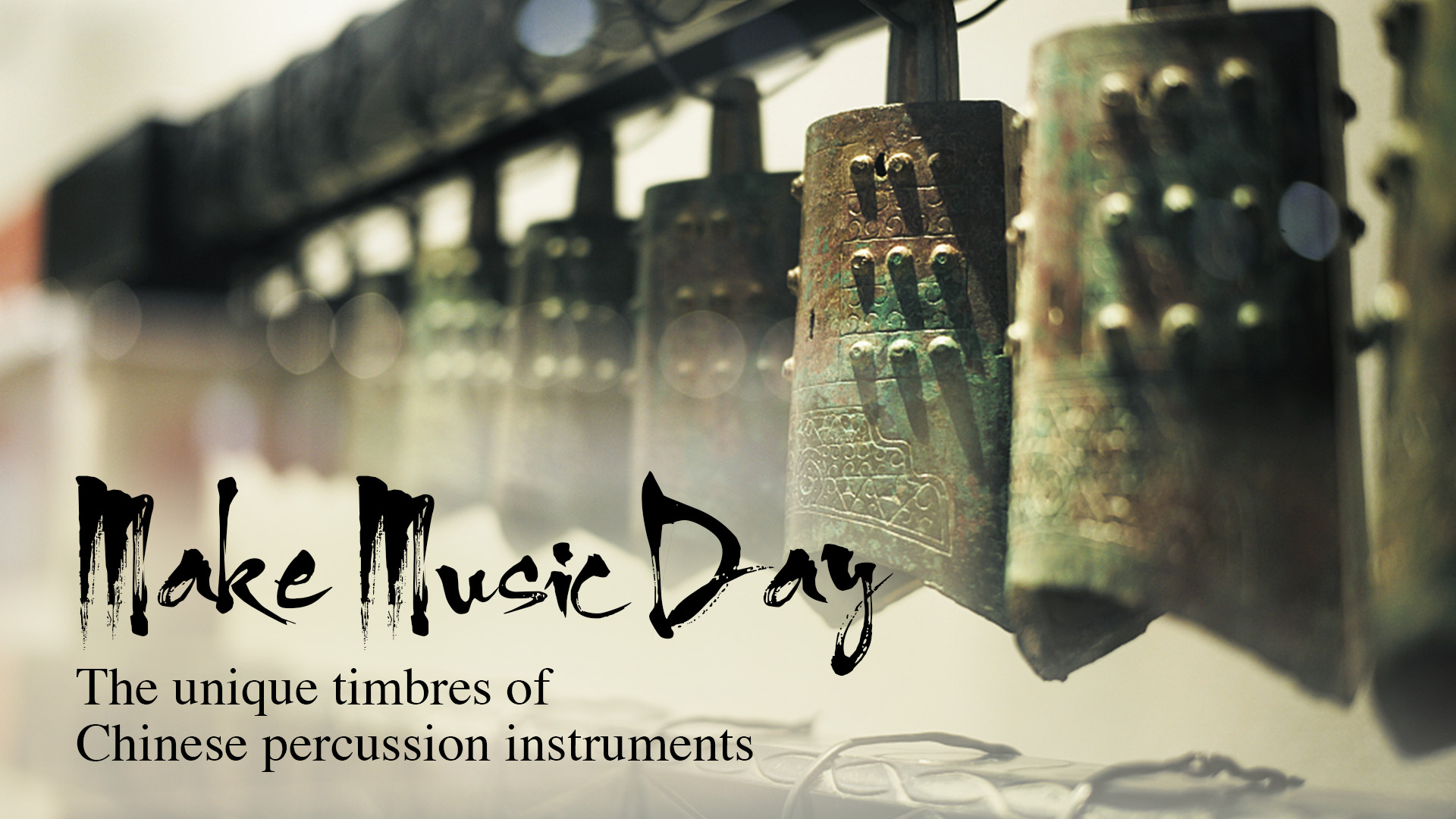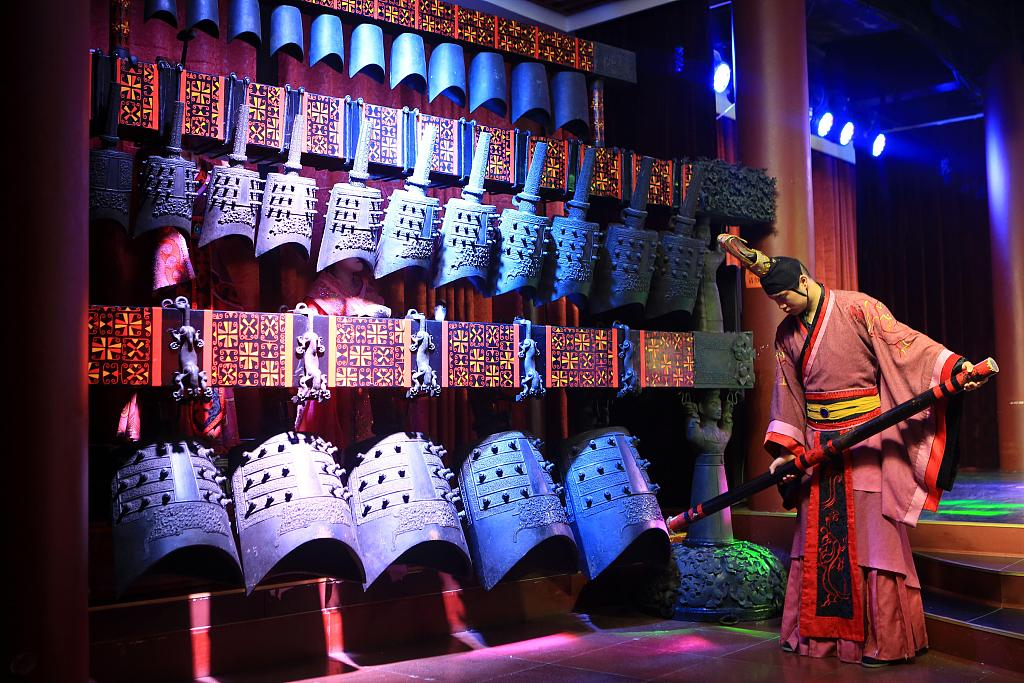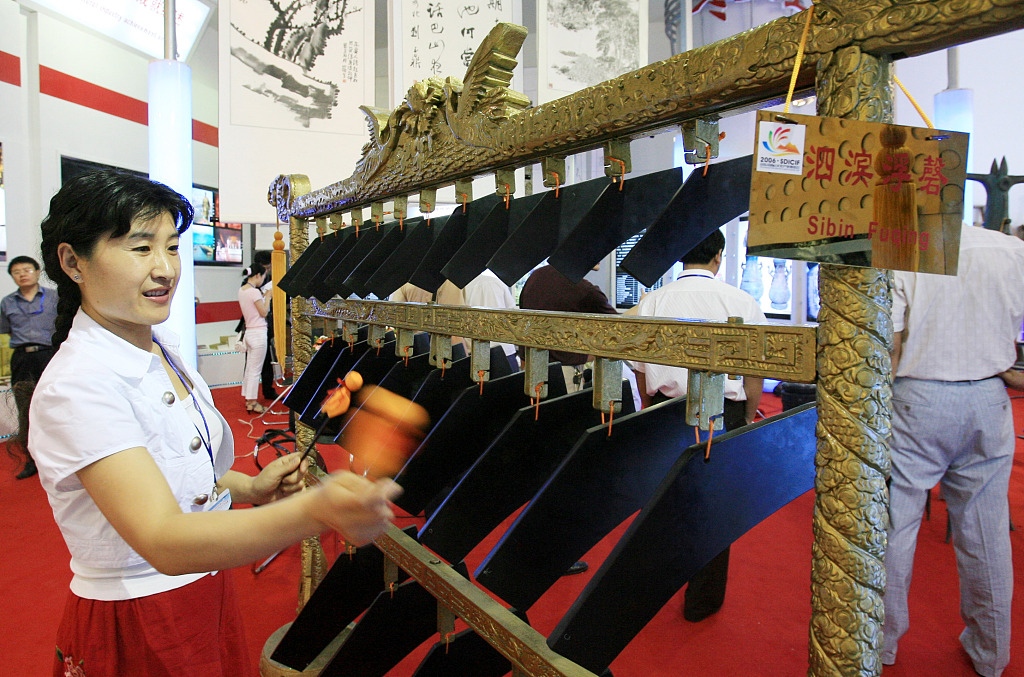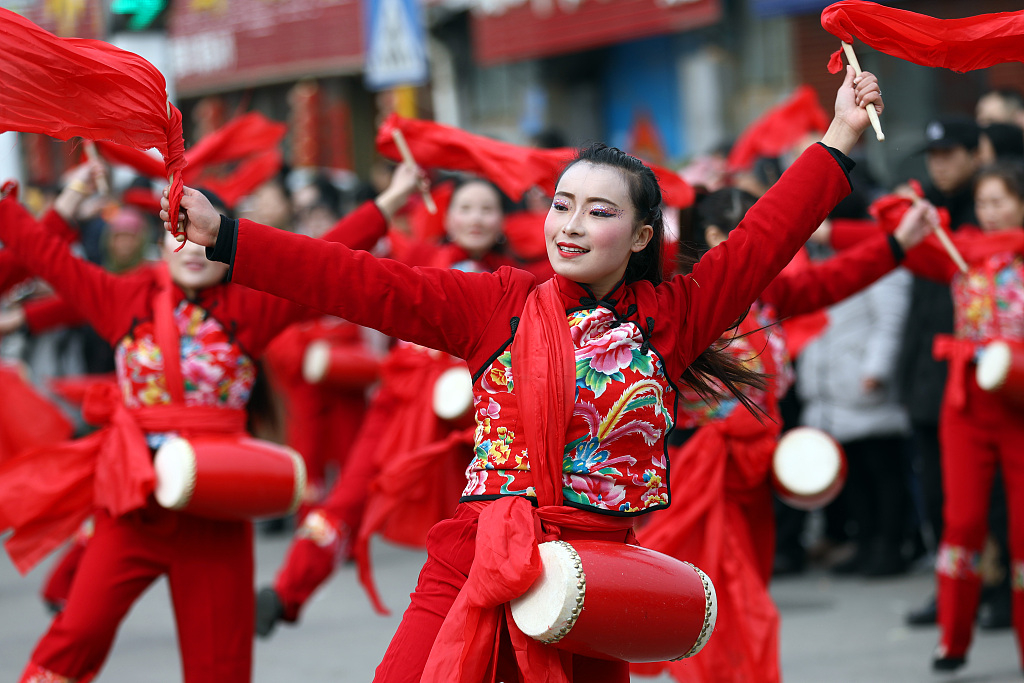

When referring to percussion instruments, the most famous one is definitely the drum. However, during the long history of Chinese music, many other classic percussion instruments were developed, contributing a huge part to the country's cultural heritage.
June 21 is Make Music Day 2019. To celebrate, let's discover three Chinese percussion instruments, and learn more about their beauty and history.
Bianzhong and Bianqing
The bianzhong is a set of bronze bells hung on a wooden frame, which can produce polyphonic tunes. The bianqing is of a similar structure, but instead of metal, the object for generating melody is made by L-shaped stones or jade.
The bells in a bianzhong, or stone chimes in a bianqing are arranged by size on the frame. When struck by a mallet, the different sized items can generate different notes. The timbre from the Bianzhong is loud and prominent while that of the bianqing is more clear and delicate.

A performer strikes the bianzhong at Yellow Crane Tower in Wuhan, central China's Hubei Province, May 21, 2018. /VCG Photo
The two percussion instruments have a history of around 3,000 years. In ancient times, the two were usually played together, and were important instruments for imperial activities and court rituals.
In folk tales, Confucius, the famous educator, philosopher and politician in ancient China, was a skilled bianqing maker.

A performer plays bianqing in a cultural event in Jinan, east China's Shandong Province, June 14, 2006. /VCG Photo
In 1978, a set of bianzhong and another bianqing was discovered in the Tomb of Marquis Yi of Zeng in Suixian County, central China's Hubei Province. The relics were well-preserved and can well be played today.
Chinese drums
Rather than one specific instrument, Chinese drums refer to a category. In the Shang Dynasty (1600-1046 BC), after clay-ceramic products came into existence, people invented clay drums, which were used for making beats for primitive dances.
Since then, the drums were tightly connected to China's dance culture.

Pupil drummers perform in Yuncheng, north China's Shanxi Province, May30, 2019. /VCG Photo
Northerners prefer big drums, while small drums tied to the waist or chest are more popular in southern areas. In ethnic groups like the Yi, Miao, Zhuang, and Buyi, people use copper drums during dances at festival celebrations and worship rituals.
Bianzhong, bianqing and the range of drums are all representative instruments of traditional Chinese music, and can be found in ancient literature and official records.

Performers enjoy waist drum dance in Lianyungang, east China's Jiangsu Province, February 16, 2018. /VCG Photo
In Classic of Poetry (11th-6th century BC), or Shi Jing, the oldest existing poetry collection in China, for example, the three instruments were frequently mentioned. "To the fair maiden that I'm into, I'd like to use the bell and drum to please you," a line of "Guan Jv" goes.

Copyright © 2018 CGTN. Beijing ICP prepared NO.16065310-3
Copyright © 2018 CGTN. Beijing ICP prepared NO.16065310-3